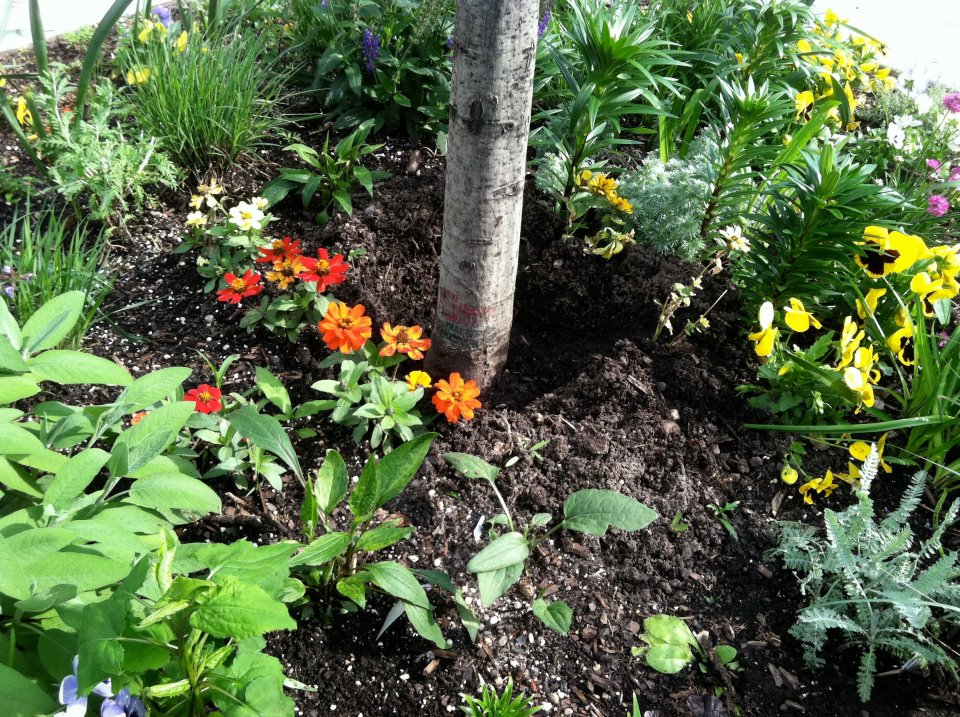Weeds and Weeding
Weeding your site, although not as important as watering, is still essential. Both street trees and greenstreets live in very small spaces that provide limited amounts of soil and nutrients. Unmanaged weeds can take over the tree bed and compete with the tree for resources, and thus should be removed regularly. Just remember, a “weed” is in the eye of the beholder -- naturally-occurring plants such aster, goldenrod, and violets can be attractive and provide important benefits to the tree bed and local wildlife. Tree stewards might consider leaving some of these plants or replacing removed weeds with more desirable species.
Guidelines
- Identify the plant as a weed. Visit Rutgers Universityʼs Weed Gallery for help in weed identification.
- Wear gloves. When removing weeds, take out the entire root system. Leaving behind some of the plant will allow the weed to grow back. Use trowels or weeders to dig out stubborn roots.
- Put the plant and its roots into a garbage bag, or compost it.
- Dispose of trash properly.
- Do not use a weed whacker or lawn mower next to a tree. They can damage the bark and weaken a tree.
- Reduce herbicide use near a tree and in surrounding lawn.
- When weeding, be on the lookout for poison ivy and any hazardous trash in the soil.
- Try to remove weeds before they flower and spread seeds.
- Weeds are easier to pull when the ground is wet. If the ground is dry and the weeds are stubborn, soak the ground with water first.
- If you find white wood aster growing under your tree, consider keeping it rather than pulling it. It is a native wildflower that will eventually form an attractive ring around the tree. Plus, it will produce pretty white flowers for several weeks each fall.
Tools You Can Use
- Gloves
- Trowels
- Garbage Bag
